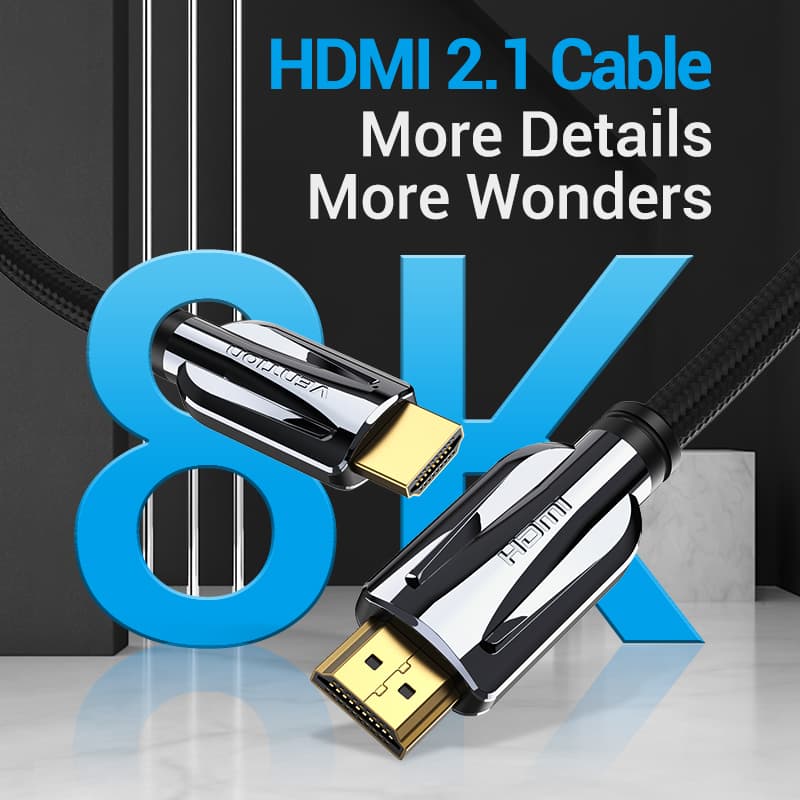In the rapidly advancing world of technology, it's not uncommon to find yourself with an older device that uses a coaxial cable and a newer one that requires HDMI. Let's face it: you've probably been there before, wrestling with cables and connectors, trying to figure out how to get your devices to play nicely together. That's why we're going to tackle the process of converting coaxial cable to HDMI in this article.
The task may seem daunting at first glance, but don't fret! With the right tools and a little bit of patience, you'll be able convert your coaxial signal into HDMI without breaking a sweat. We'll walk you through each step of the process so that even if you're not particularly tech-savvy, you can still get things up and running smoothly.
Remember: technology shouldn't be intimidating or frustrating; it should empower us. So let's dive into understanding how we can transition from an old-school coaxial cable setup into the sleek and versatile world of HDMI connectivity.
Understanding Coaxial Cable and HDMI
You're likely familiar with the term coaxial cable if you've ever set up a TV or internet connection in your home. These sturdy, thick cables are designed to transmit radio frequency signals from one point to another without significant loss of quality or signal strength. They're constructed with a central conductor wire, an insulating layer, a conductive shielding layer, and an outer insulating cover. They've been the standard for decades when it comes to carrying analog signals.
But what about HDMI? That stands for High-Definition Multimedia Interface. It's a more modern technology that carries digital signals instead of analog ones. This means it can support high-definition video and audio streams all at once, providing better quality than coaxial cables which only carry video or audio separately.
It's important to note that there are key differences between these two types of cables:
- Signal Type: Coaxial cables transmit analog signals while HDMI transmits digital.
- Quality: With HDMI, you'll experience superior video and audio quality compared to coaxial.
- Versatility: HDMI can handle both video and audio simultaneously, whereas coaxial can only manage one at a time.
Despite their differences though, they do share some similarities:
- Both serve as mediums for transmitting data.
- They are commonly used in home entertainment systems.
- Each has its unique strengths: Coax is great for long-distances without signal degradation while HDMI excels at delivering high-quality digital content.
Understanding these basic concepts will help you appreciate why you might want to convert from coaxial cable to HDMI — whether it's because you want the improved sound and picture quality or need the versatility of an all-in-one cable solution.
Why Convert Coaxial Cable to HDMI?
Why, you may ask, should I bother with converting my coaxial cable to HDMI? Well, there are a few compelling reasons. Let's dive in.
First off, it's all about the quality of your viewing experience. If you're still using a coaxial cable to connect your devices, you're not getting the most out of them. HDMI cables transmit digital signals while coaxial cables carry analog ones. For you, this means that an HDMI connection can deliver higher-resolution video and multichannel audio over a single line - vastly improving the quality of both your sound and picture.
It's also about convenience. With an HDMI cable, you only need one wire to carry both video and audio signals from your device to your TV or monitor. This cuts down on the clutter behind your entertainment center and makes set-up easier – no more fussing with multiple cords!
In terms of compatibility with modern devices, it's crucial too! The majority of new televisions and projectors come equipped with at least one or two HDMI ports rather than coaxial input. So if you want to connect newer gadgets like Blu-ray players or gaming consoles that use HDMI output exclusively, then converting from coaxial is pretty much unavoidable.
Not convinced yet? Let's talk about upscaling capabilities - another reason why many folks find themselves making the switch from coaxial to HDMI. Upscaling is when a device enhances lower resolution content (like DVD) up closer to HD or even 4K-quality images! And guess what? Most upscalers work best (or only!) through an HDMI connection.
So whether it’s for improved visual clarity and audio fidelity, ease-of-use, compatibility with cutting-edge techs or for those awesome upscaling features; converting from a legacy technology like coaxial cable towards something more current like HDMI sure seems worth considering!
Tools Needed for Conversion
Let's dive right into the topic at hand - the tools you'll need to convert your coaxial cable to HDMI. You may be surprised to find that you don't need a whole toolbox, but a few specific items.
Firstly, there's no way around it - you're going to need an RCA to HDMI converter. This is because the RCA cables which come from your coaxial output aren't compatible with your HDMI input. Simply put, these converters act as translators between the two different types of signal.
Secondly, ensure you've got enough RCA cables at hand. These are generally colored yellow (for video), and red and white (for audio). You'll need these to connect your device with coaxial output to the converter.
Thirdly, don't forget about power for your converter! Most converters will either have a power plug that needs connecting or require batteries.
Lastly but definitely not least, an HDMI cable is crucial in this conversion process. An obvious necessity perhaps, but worth mentioning all the same!
Here's a quick rundown:
- RCA to HDMI Converter
- RCA Cables
- Power Source for Converter (plug or batteries)
- HDMI Cable
These tools are essential for any coaxial-to-HDMI conversion mission you decide to embark on! Remember though, while it might sound complex having never done it before, once you get started it's usually quite straightforward. Happy converting!
Step-by-Step Guide to Converting Coaxial Cable to HDMI
Let's dive right into the steps you'll need to follow. First off, you're going to need a coaxial to HDMI converter. Remember, it's important to find a quality product because this is the device that will translate your signal from analog (coax) to digital (HDMI).
Once you've got your converter in hand, start by unplugging all equipment from their power sources. It's always better to be safe than sorry when dealing with electronics. Then, connect one end of the coaxial cable into the 'Coax IN' port on your adapter.
Following that step, take an HDMI cable and plug one end into the 'HDMI OUT' port on your adapter. The other end of this HDMI cable should then be plugged into the 'HDMI IN' port on your TV or display monitor.
Power up all devices once these connections have been made. You'll notice that some converters may require separate power sources - don't forget about this crucial part! Once everything is powered up and running smoothly, navigate through your TV's settings until you locate its input source options. From there, select 'HDMI'.
And voila! You've successfully converted a coaxial cable signal into an HDMI signal. This process isn't too complicated but requires careful attention while connecting cables and setting up devices.
You might experience variations in video quality depending upon various factors like age of cables or strength of signals but generally speaking, if followed correctly these steps would help most users achieve their goal effectively without much hassle.
Bear in mind though - while conversions like these are quite common in today's tech-savvy world they can sometimes result in loss of some features provided by newer technologies such as HDR10+ or Dolby Vision which are typically not supported over coax.
Now let’s summarize what we’ve discussed:
- Unplug all electronic devices
- Connect the coaxial cable to the 'Coax IN' port on your adapter
- Plug one end of HDMI cable into 'HDMI OUT' port on adapter and other end into 'HDMI IN' on TV
- Power up all devices and select 'HDMI' as input source on your TV settings
So there you have it. A step-by-step guide to converting coaxial cable to HDMI. It's simpler than you might think, isn't it?
Troubleshooting Common Issues During Conversion
When you're neck-deep in the process of converting your coaxial cable to HDMI, problems may pop up out of nowhere. But don't worry – you're not alone. Countless folks have walked this path before and faced similar hitches.
No Signal or Poor Quality Signal
One issue that often crops up is that of no signal or poor quality signal after conversion. If you find yourself staring at a blank screen, make sure all your connections are secure and correctly installed. A loose connection can be the difference between a crisp, clear image and...nothing.
If it's not the connections, inspect your converter box. Faulty converters can cause signal loss or degradation as well.
Incompatible Equipment
Another common problem lies with incompatible equipment. Not all converters are created equal, so ensure yours supports both coaxial input and HDMI output. It's also worth checking if your TV has an HDMI port compatible with the converter's output.
Audio Problems
Then there's the audio side of things - sometimes video converts just fine but leaves you hanging when it comes to sound.
- Check whether your TV is set to receive audio through HDMI.
- Ensure that audio isn't being sent elsewhere (like external speakers).
- Verify if the converter supports audio conversion too – some might only convert video signals!
In most cases, these troubleshooting steps should suffice to get you back on track with your conversion project! Remember: patience is key here – with a little persistence, you'll soon have that coaxial cable converted to HDMI without any hitches!
Safety Tips While Converting Coaxial Cable to HDMI
When you're elbow-deep in wires, it's easy to forget about safety. That’s why we've pulled together a few reminders for when you're converting your coaxial cable to HDMI.
First off, always turn off and unplug any devices before beginning work. It's a simple step that can protect you from potential electrical shocks. Plus, it'll prevent any short-circuits or damages to your equipment.
Next up: the tools. Make sure they're designed for the job at hand. Using inadequate or makeshift tools not only makes the process more difficult but could also lead to accidents. Don't try cutting corners – invest in quality wire strippers, pliers, and screwdrivers if needed.
It's also crucial to keep your workspace neat and tidy. Loose wires and scattered tools are tripping hazards waiting to happen. So take a second now and then during your project to clean up around you – trust us, it'll make everything run smoother.
Lastly, don’t forget about personal protective gear! This might feel like overkill for an indoor project but even here small things matter: Glasses can shield your eyes from stray bits of metal or dust; Gloves give better grip on tools while protecting against scratches or cuts; Closed-toe shoes keep accidental drops from turning into injuries.
In essence, safety measures may slow down the process slightly but remember - nothing is more important than your wellbeing! Stay safe while you’re improving your viewing experience with this conversion project.
Comparison: Before and After the Conversion
Before you dove into this project, your entertainment system might've felt like a relic from an era gone by. Coaxial cables were the standard, connecting your television to your cable box and DVD player. It's an older technology that served its purpose well in its heyday. But now, it's time for an upgrade.
The conversion process changes everything. With the switch to HDMI, you're stepping into the modern world of digital audio and video transmission. Let's dive into some of these changes:
- Quality: Initially, coaxial cables could only support standard definition signals up to 480i. That meant grainy images on a large screen TV or projector setup. Post-conversion, HDMI supports high-definition content all the way up to 4K resolutions at 60 frames per second.
- Ease of Use: Remember how coaxial cables required clumsy screw-on connectors? Those days are over once you make the switch! HDMI uses simple plug-and-play connectors that couldn't be easier to handle.
- Audio Support: Audio quality is another area where HDMI shines post-conversion. While coaxial cables can carry stereo audio signals at best, HDMI can support eight channels of uncompressed digital audio for true surround sound.
With these benefits laid out before you, it becomes crystal clear why this conversion is worth every effort involved.
Conclusion: Final Thoughts on Converting Coaxial Cable to HDMI
You've now navigated through the complete process of converting a coaxial cable to HDMI. It's not as daunting as it initially seemed, is it? The steps are pretty straightforward and you've got a handle on them.
Remember, you'll need an adapter box for this conversion. Don't forget that quality matters here. Your choice could greatly affect your viewing experience, so aim for the best your budget can afford.
Keep in mind the importance of your connections too. You want them secure and properly fitted to avoid any signal loss or degradation.
Also, consider where you're placing your adapter box - a well-ventilated space is ideal as these boxes can heat up during operation.
Lastly, understand that while this method works perfectly fine, there may be slight differences in quality compared to having an actual HDMI source. But don't let this deter you - the difference is usually negligible unless you're an ultra-high definition enthusiast.
So there you have it! You now possess all the knowledge necessary to convert a coaxial cable into HDMI with confidence like a true pro! The power is in your hands to enhance your media experiences at home by leveraging older technology with newer tech trends.
Stay connected, stay updated.

Mastering the Art of Audio Upmixing
UniFab Audio Upmix AI is revolutionizing the way audio production is approached in various industries. By utilizing cutting-edge artificial intelligence technology, UniFab Audio Upmix AI offers a unique and innovative solution for upmixing audio content to deliver superior sound quality.

Revolution on the Used Device Market: How Automation is Leading the Way
The main trend in the used device market is automation. All processes that are done manually have one common drawback: human errors.

What are the advantages of using a woman owned staffing agency?
While selecting a staffing agency in the current evolving and inclusive business environment the significance of diversity and equality cannot be ignored. It has become more evident than before. Businesses can actively add to this objective and enjoy an inclusive and gender equal workforce by partnering with a women recruitment agency. Teaming up with an agency can help you enjoy a completely unique perspective about recruitment, gender diversity and values to the hiring process.

The Art of Selecting the Perfect Bouquet for Every Occasion: A Comprehensive Guide
In the world of floral gifting, selecting the perfect bouquet is an art form that goes beyond simply choosing pretty flowers. Each occasion carries its own significance and sentiment, and the right bouquet has the power to convey exactly the message you intend. Whether you're celebrating a joyful milestone, expressing condolences, or simply saying "I love you," understanding the nuances of flower selection can elevate your gift to a meaningful expression of emotion. In this comprehensive guide, we'll delve into the art of selecting the perfect bouquet for every occasion, offering expert tips and insights to help you navigate the world of floral gifting with confidence and flair.
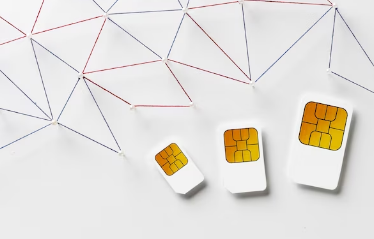
How many eSIMs can be used in iPhone?
Are you looking to streamline your mobile experience with an eSIM for your iPhone? The advent of eSIM technology has revolutionized the way we connect, allowing for a more seamless and efficient use of our devices. With an eSIM iPhone, you can forget about the hassle of physical SIM cards and enjoy the benefits of multiple network plans on a single device. But how many eSIMs can an iPhone support? And how do you go about adding an eSIM to your iPhone? In this article, we'll dive into the ins and outs of eSIM capabilities on your SIM iPhone, providing you with a step-by-step guide to getting set up. Keep reading to unlock the full potential of your iPhone with eSIM technology and learn how to enhance your connectivity with ease.
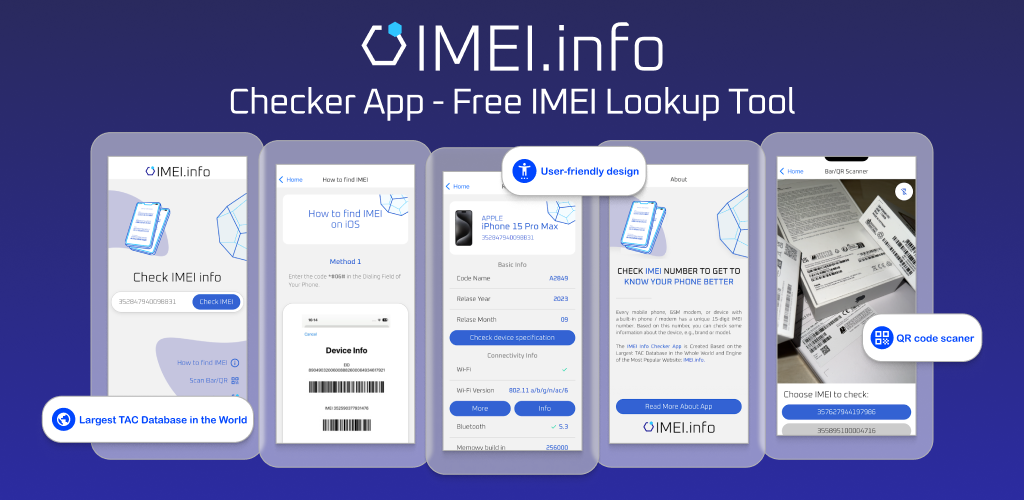
IMEI Info Checker App
The awaited moment has arrived! After a period of anticipation, we take immense pride in announcing the launch of the IMEI Info Checker App, marking a pivotal moment in accessing concealed mobile device information. In today's digitally intertwined landscape, understanding your device's nuances is pivotal. This long-awaited unveiling undoubtedly simplifies access to concealed information about any mobile device. Soon available on the App Store for iOS and the Play Store for Android, this app promises a transformative shift in how users interact with their device data.
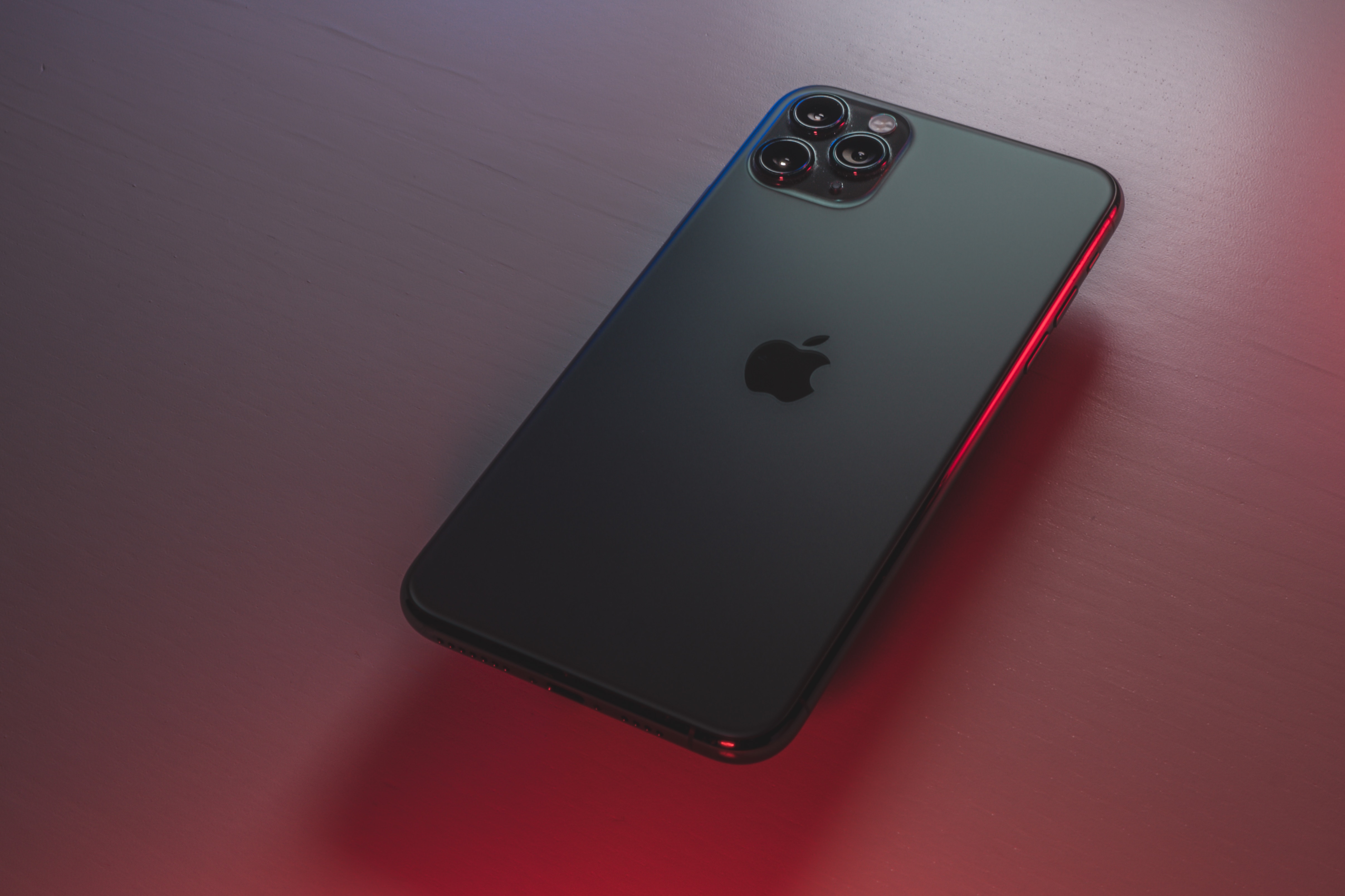
iPhone GSX Check
Are you seeking essential details about your iPhone's carrier network, warranty status, and other critical information? The iPhone GSX Check provides comprehensive insights into various aspects like simlock network, Find My iPhone status, warranty info, and more.
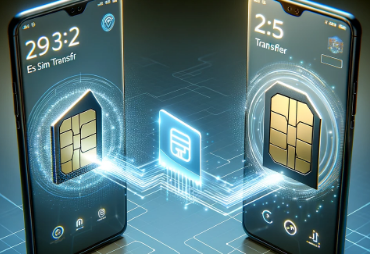
eSIM Quick Transfer - All You Need to Know
In the ever-evolving landscape of smartphone technology, eSIM (embedded SIM) has emerged as a game-changer, offering greater flexibility and convenience for users. One of the latest innovations in this realm is the eSIM Quick Transfer feature, which streamlines the process of transferring eSIM profiles between devices. Whether you're an iPhone aficionado or an Android enthusiast, understanding the ins and outs of eSIM Quick Transfer is essential for maximizing the potential of your mobile experience.
